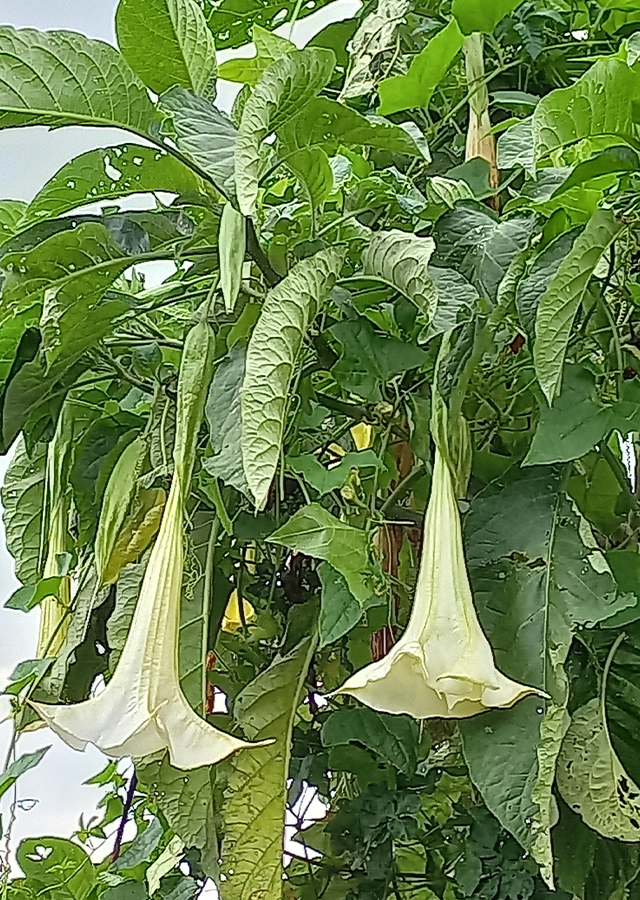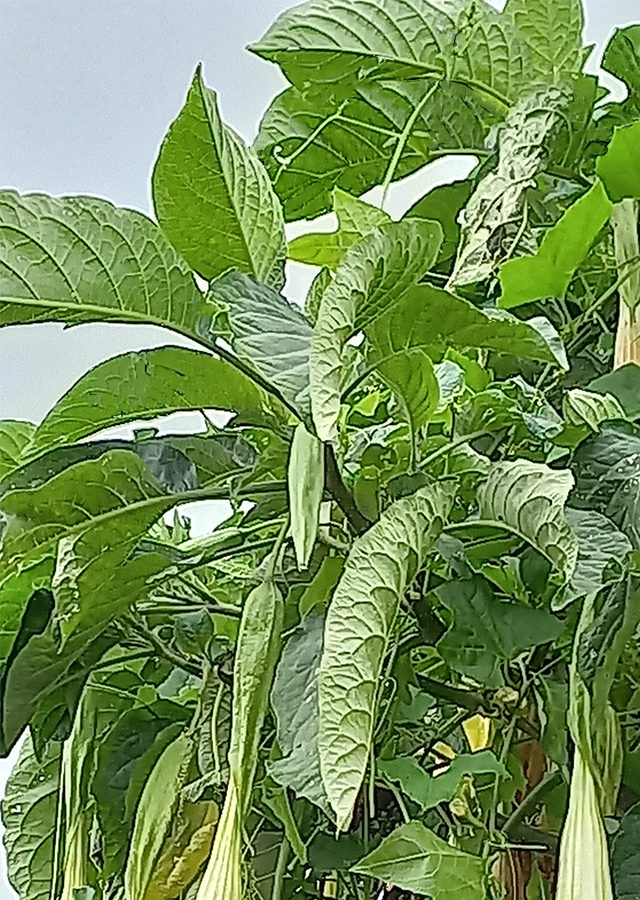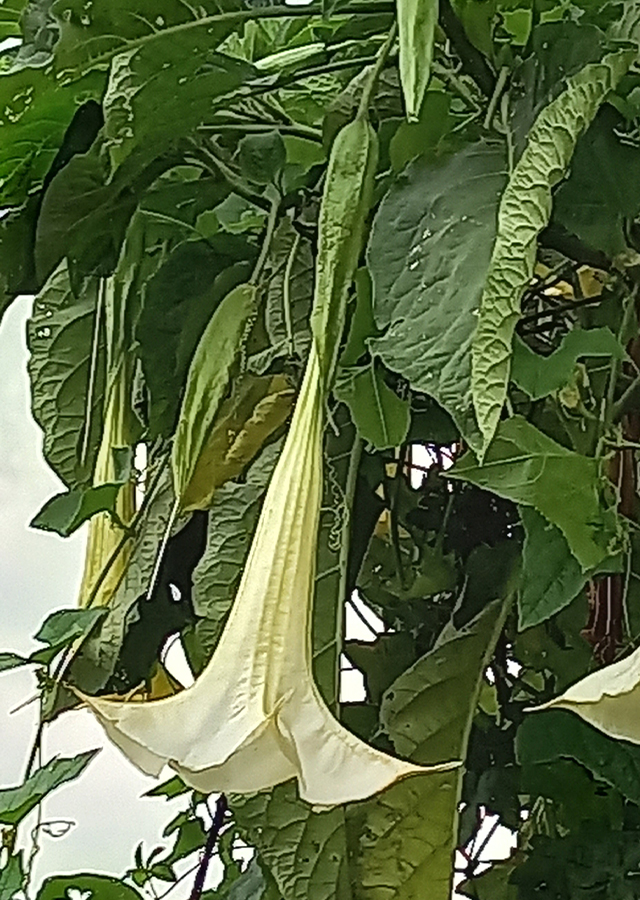Angel's Trumpet
Brugmansia x candida Pers.
Solanaceae
Location in our garden
Principal



Synonym
Brugmansia × amesiana (R.E.Schult.) D'Arcy
Brugmansia × amesianum (R.E.Schult.) D'Arcy
Brugmansia × knightii Bosse
Habitus
Shrubs. A large perennial shrub or small tree, up to 4 m tall
Part Used
Flowers
The Whole Plant
Growing Requirements
Full Sunshine
Need Shade
Habitat
Riverbanks
Forest
Terrestrial
Overview
Angel's trumpet is native to Ecuador and Peru. It is naturalized in Mexico, Central America, Madagascar, Australia, New Zealand, the West Indies and on several islands in the Pacific Ocean. The plant was introduced for horticultural purposes, probably during the last part of the nineteenth century. Some South American cultures have also used Brugmansia in religious or spiritual ceremonies.
Vernacular Names
Borrachero (Spanish), Trompette blanche des anges (French), Campana (Cuban), Stechapfel (German), Stramonio candido (Italian), Doornappel (Dutch), Cornucopia (Puerto rican).
Agroecology
Angel's trumpet grows in warm and humid places in lowland rainforest, forest edges, disturbed habitats, riverbanks and urban open spaces. In New Zealand it can be found in lowland areas towards the coast. Thrives on moist soils, well-drained soils, fertile loamy soils. Prefers semi-shade and moderate amount of water.
Morphology
- Stems - pubescent with simple, erect, crisped hairs.
- Leaves - simple, alternate, ovate, to 15-25 cm long, 8-12 cm wide, entire, rarely with a few shallow lobes, apex acute to acuminate, base oblique, petioles up to 6 cm long.
- Flowers - solitary, pendulous, pedicels 3-5 cm long, stout in fruit; calyx tubular, spathe-like, split on 1 side and the lobes not clearly separated, up to 12 cm long; corolla white or pale apricot, 25-30 cm long, tube slender, gradually flaring to the limb, lobe apices broadly triangular and terminated by cusps 2-3 cm long; stamens 5, inserted below middle of corolla tube; filaments 4-5 cm long; anthers distinct, linear, ca 2.5 cm long, opening longitudinally; ovary 2-celled; style 17-19 cm long; stigma oblong, 5-7 mm long, included in corolla throat.
- Fruits - capsule, rarely formed, fusiform, reportedly up to 20 cm long, 2 cm wide, pendulous, unarmed.
- Seeds - reportedly numerous, D-shaped, 6-10 mm long, seed coat corky.
Cultivation
Propagated by seeds and cuttings.
Chemical Constituents
Alkaloids such as scopolamine, hyoscyamine, and atropine.
Traditional Medicinal Uses
As a spasmolytic, antiasthmatic, anticholinergic, has anesthetic properties, analgesic for traumatic or rheumatic pain as well as for the treatment of dermatitis, orchitis, arthritis, headaches, infections, and as an anti-inflammatory.
Part Used
Reference Sources
- Royal Botanic Gardens. 2017. Plants of the World Online: Brugmansia × candida Pers. http://www.plantsoftheworldonline.org/taxon/urn:lsid:ipni.org:names:814597-1. 25-11-21.
- CAB International. 2021. Brugmansia candida (angel's trumpet). https://www.cabi.org/isc/datasheet/10133. 25-11-21.
- Flora Fauna Web. 2021. Brugmansia Pers. × candida. https://www.nparks.gov.sg/florafaunaweb/flora/6/0/6038. 25-11-21.


